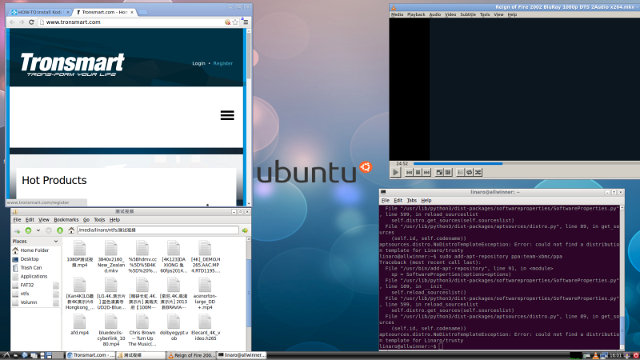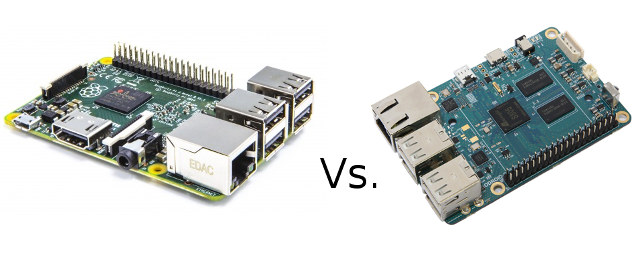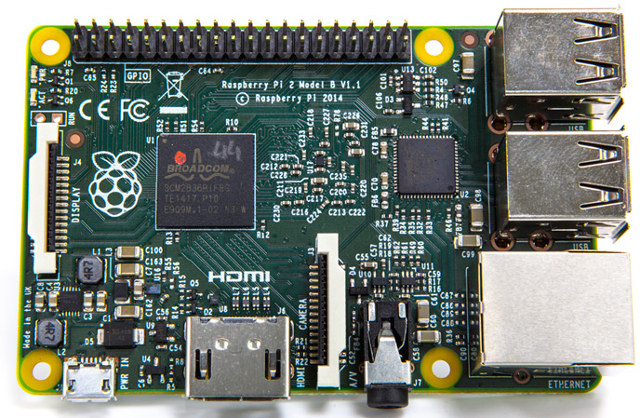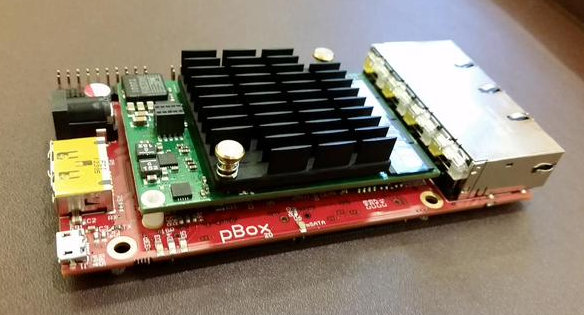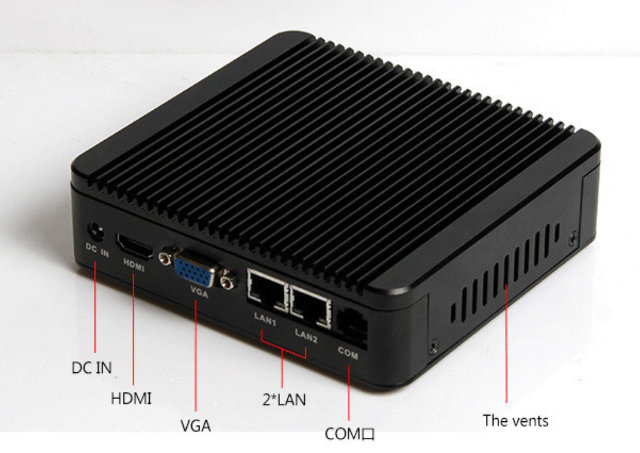Embedded Linux Conference 2015 will take place in San Jose, California, on March 23 – 25, 2015, and will focus on Drones, Things and Automobiles. The schedule has been published, and whether you’ll attend or not, it’s always interested to have a look at what will be talked about to have a peak into the future of Embedded Linux, or simply keep abreast with the progress in the field. So as usual, I’ve gone through the schedule, and made my own virtual program with talks that I find interesting. Monday 23rd 9:00 – 9:30 – Driving standards and Open Source to Grow the Internet of Things by Mark Skarpness, Director of Systems Engineering at Intel Billions of devices are beginning to come online, and many of these devices, large and small, are running open source software. To fuel this innovation, it’s more important than ever for these devices to use […]
Onkyo TX-NR636 AV Receiver Setup and Audio Pass-through with OpenELEC / Kodi
Following up on my LG 42U820T 4K TV review, I’ll know checkout the second item purchased for my reviews thanks to the help of my readers, with Onkyo TX-NR636 7.2 channel AV receiver combined with Pioneer S-11 speaker set. As this is my first AV receiver, I still have a lot to learn, I can’t really comment on audio quality (except it sounds much better than my TV speakers, and is more powerful), so I won’t do a full review, but I’ll show some details about the receiver, explain how to it setup with speakers, show how to setup OpenELEC / Kodi for HDMI audio pass-through, and test it with various Dolby and DTS video files. Onkyo TX-NR636 Specifications But before all that, I’ll list some of the specifications of this cool AV receiver. Amplified Rated Output Power: 95 watts minimum continuous power per channel, 8 ohm loads, 2 channels driven […]
Latest Ubuntu 14.10 Image for Tronsmart Draco AW80 Supports Hardware Video Decoding
Tronsmart Draco AW80 is one of the most powerful ARM mini PC on the market thanks to Allwinner A80 octa core processor, and the company also released an early Linux (Ubuntu) image at the end of last year. However, this firmware could not support hardware video decoding nor 2D/3D graphics acceleration. Since then progress has been made, and Tronsmart has just released an image with hardware video decoding. There’s still some work to be done as 4K and H.265 are not supported, and support for Kodi also needs to be implemented. At least for now you should be able to play 1080p video with VLC without issues, and the company also claims online video will play without lags. If you’d like to give it a try, download and extract Draco_AW80_Ubuntu_20150204.zip. Then follow Allwinner A80 firmware upgrade instructions with PhoenixSuit (Windows) or LiveSuit (Linux) firmware tool to complete the process. You […]
Raspberry Pi 2 / ODROID C1+ Development Boards Comparison
Raspberry Pi 2 Model B board has just been released, and although it’s not a direct answer to ODROID-C1, as Broadcom started the design for BCM2836 SoC for RPI2 a long time ago, both low cost development boards have similar specifications, with a quad core processor, 1GB RAM, Ethernet, and four USB ports, as well as the exact same price: $35. So I’ve decided to compare both in details to find out the actual differences, and which one may be more suitable to a particular application. Let’s get straight to the comparison table. [Updated on November 24 to use ODROID C1+ instead of ODROID C1] Hardkernel ODROID C1+ Raspberry Pi 2 Model B Comment Processor Amlogic S805 quad core Cortex A5 @ 1.5 GHz (Overclockable to 1.7 GHz or more) Broadcom BCM2836 quad core Cortex A7 @ 900 MHz (Overclockable to 1.1GHz or more) Despite the architecture advantage for Cortex […]
Raspberry Pi 2 Model B Features Broadcom BCM2836 Quad Core Processor
The Raspberry Pi foundation has finally released an upgraded version of the Raspberry Pi. Raspberry Pi 2 model B features much of the same ports and form factor as Raspberry Pi Model B+, by replaces Broadcom BCM2835 ARM11 processor @ 700 MHz with a much faster Broadcom BCM2836 quad core ARMv7 processor @ 900 MHz, and with an upgrade to 1GB RAM. Raspberry Pi 2 Model B specifications: SoC – Broadcom BCM2836 quad core Cortex A7 processor @ 900MHz with VideoCore IV GPU System Memory – 1GB LPDDR2 (PoP) Storage – micro SD card slot (push release type) Video & Audio Output – HDMI and AV via 3.5mm jack. Connectivity – 10/100M Ethernet USB – 4x USB 2.0 ports, 1x micro USB for power Expansion 2×20 pin header for GPIOs Camera header Display header Power – 5V via micro USB port. Dimensions – 85 x 56 mm I could not […]
Linaro 15.01 Release with Linux 3.19 and Android 5.0
Linaro has just announced the first release of the year with Linux 3.19-rc3 (baseline), Linux 3.10.65 and 3.14.29 (LSK), Android 5.0.2, and Ubuntu Linaro Utopic. Changes seem to have focused on ARM, Qualcomm, and HiSilicon hardware platforms such as Juno, and IFC6410, and some work has been done on Debian ARM64 rootfs. Here are the highlights of this release: Linux Linaro 3.19-rc5-2015.01 GATOR topic updated to version 5.20.1 builddeb topic: fixes for the dtb files location changes in 3.19 (vendor subdir introduced) updated integration-linaro-vexpress64 topic by ARM LT (FVP Base and Foundation models, and Juno support) updated topic from Qualcomm LT (IFC6410 board support) updated topic from HiSilicon LT (Hi36xx, HiP04, and X5HD2 families support) updated LLVM topic (uses the community llvmlinux-latest branch) Included ILP32 patch set v3 rebased on 3.19-rc5. Initial tests using syscalls LTP tests are done: msgctl07 stalls when using ILP32 userland (no stall with LP64 userland). […]
Online Labs pBox (C1 Node) is a mini ARM Server with 4 Gigabit Ethernet Ports, mSATA and mPCIe Slots
Online Labs, a subsidiary of Iliad (free), recently launched hosting services with dedicated ARM servers based on Marvell processor with modules they call C1. The company has decided to design a baseboard (pBox) for C1 module, and, as I understand it, plans to sell it to the public. It’s an exciting development for those who are looking for affordable and tiny purpose built Linux ARM servers. Preliminary C1 Node / pBox mini server specifications (based on C1 specs and bits of information gathered online): SoC – Marvell Armada 370/XP quad core ARMv7 processor @ up to 1.2 GHz System Memory – 2GB RAM Storage – 256 MB NAND flash + mSATA slot + eSATA port + micro SD slot Connectivity – 4x Gigabit Ethernet ports USB – 1x micro USB port Expansion – mini PCie, 1x 20-pin header for expansion (no details yet) Debugging – 20-pin JTAG connector Power Supply […]
X29 Intel Celeron J1800 / J1900 mini PC Sells for $125 and Up
Today, somebody asked me to test 4K output on Intel Atom Z3735F, but I can’t do that since the platform only supports 1080p. As I just posted my unboxing of MeLE PCG03 mini PC, I noticed several ICs where added for extra functionalities, and people also started to complain about lack of Gigabit Ethernet, Fast Ethernet via a USB bridge, no USB 3.0, and no SATA. That’s what happens when you use a Tablet SoC in a mini PC, but if you’re ready to pay a little more, you could still get a mini PC with a proper desktop processor (Bay Trail-D) including SATA, USB 3.0, and Gigabit Ethernet (maybe) for about $125 (shipped) with X29-J1800 computer powered by Intel Celeron J1800 (10W TDP). That’s the price for the barebone system without RAM or storage, and if you want a complete system with 32GB eMMC and 4GB RAM the price […]




